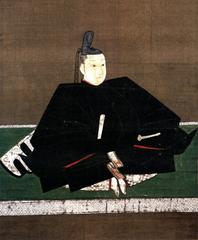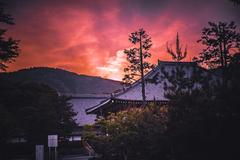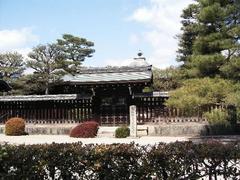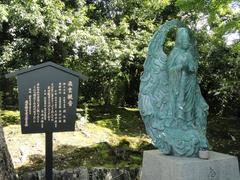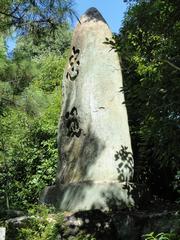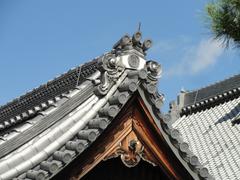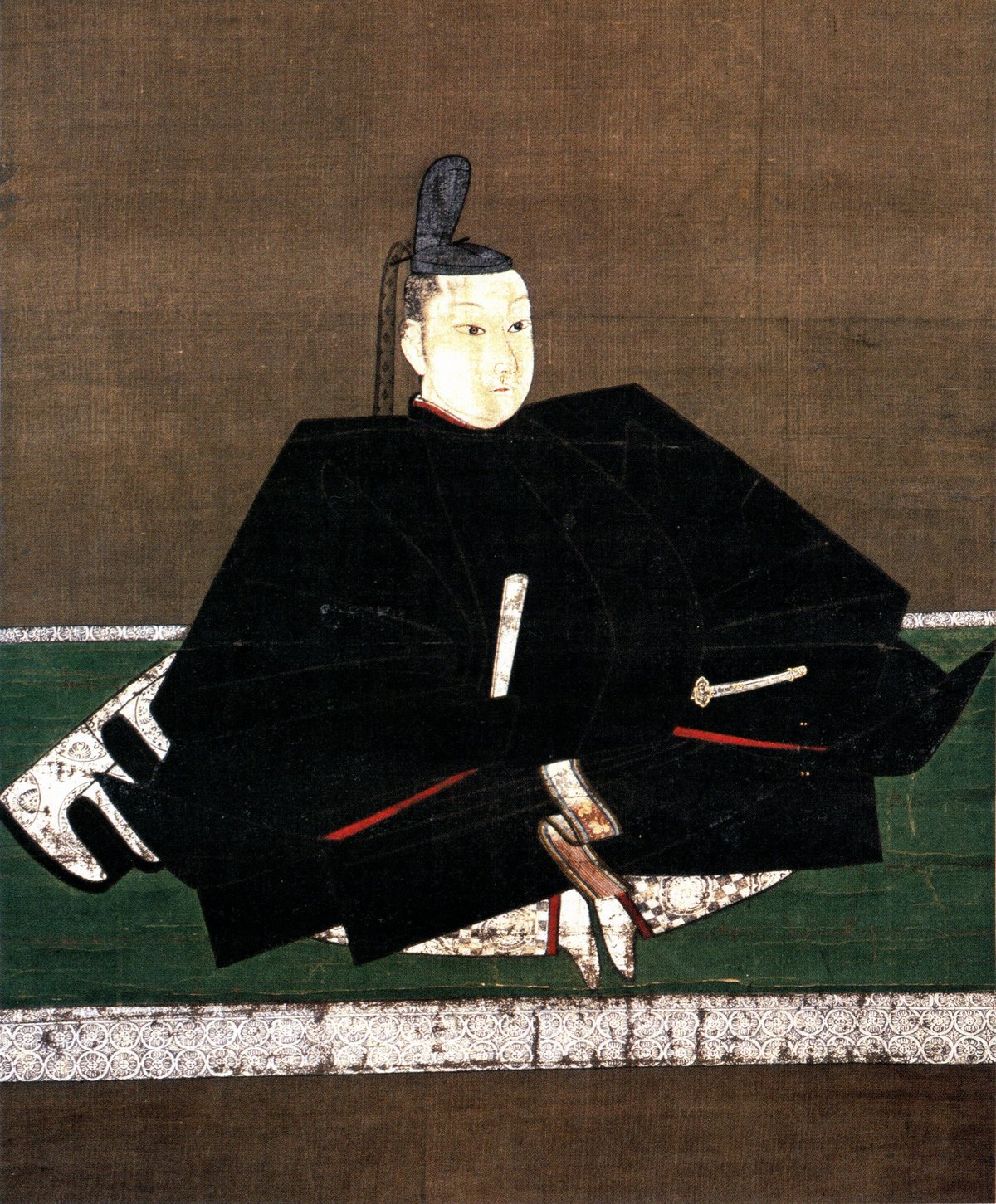
Tenryu-ji Kyoto: Visiting Hours, Tickets & Comprehensive Guide to Historical Sites
Date: 14/06/2025
Introduction
Nestled in Kyoto’s scenic Arashiyama district, Tenryū-ji Temple is a crown jewel of Japanese Zen Buddhism and a UNESCO World Heritage Site. Founded in 1339 by Ashikaga Takauji as a memorial to Emperor Go-Daigo, the temple has stood as a spiritual, cultural, and artistic beacon for centuries. Known as the “Temple of the Heavenly Dragon,” Tenryū-ji embodies a harmonious blend of historical significance, architectural elegance, and natural beauty. This detailed guide provides everything you need to plan your visit, from practical information and historical context to insights into its gardens, spiritual practices, and nearby attractions.
Table of Contents
- Historical Overview
- Visiting Tenryū-ji: Essential Information
- Cultural and Spiritual Significance
- Seasonal Highlights and Special Events
- Nearby Attractions and Suggested Itineraries
- Frequently Asked Questions (FAQ)
- Summary and Visitor Tips
- Sources and Further Reading
Historical Overview
Origins and Foundation
Tenryū-ji was established in 1339 by Ashikaga Takauji to honor Emperor Go-Daigo, symbolizing a reconciliation between the shogunate and imperial authority. Its founding also marked a critical moment for Zen Buddhism, helping to cement its influence in Japanese culture and governance. The temple’s name derives from a legendary vision of a golden dragon ascending from the nearby Ōi River, reflecting enlightenment and transformation—concepts central to Zen thought (Japan Guide).
Major Events and Restoration
Throughout its history, Tenryū-ji has faced repeated devastation from fires, wars—including the Ōnin War—and natural disasters. Despite these setbacks, the temple has been meticulously restored, with its main halls and gardens reconstructed in the Meiji period and beyond. Its resilience and continuous restoration efforts underscore its significance as a living monument to Japanese heritage. In 1994, Tenryū-ji was designated a UNESCO World Heritage Site as part of the “Historic Monuments of Ancient Kyoto” (Discover Kyoto).
Visiting Tenryū-ji: Essential Information
Hours & Ticket Prices
- Visiting Hours: Open daily from 8:30 AM to 5:30 PM (last entry at 5:00 PM). Hours may vary during special events or by season; check the official website for updates.
- Admission:
- Gardens: Approximately 500 yen for adults
- Temple buildings: Additional 300 yen
- Discounts are available for children and students; tickets are available on-site (cash preferred).
- Guided Tours: English-language signs are present; external guided tours can provide deeper insights.
Getting There & Accessibility
- By Train: 5-minute walk from Saga-Arashiyama Station (JR Sagano Line) or Arashiyama Station (Keifuku/Randen Line).
- By Bus: Kyoto City Bus #28 or #11 stop near the temple.
- By Bicycle/On Foot: Arashiyama is ideal for walking and cycling.
- Accessibility: Main paths are largely accessible, but some historic areas have steps or gravel. Wheelchair users can access most parts of the gardens but may need assistance in certain areas (Happy Jappy).
Facilities and Visitor Tips
- Amenities: Restrooms, benches, a gift shop with souvenirs, and vending machines are available.
- Etiquette: Modest dress is appreciated, hats should be removed inside buildings, and photography is generally allowed in gardens but restricted indoors.
- Crowds: Early mornings and weekdays provide a quieter experience, especially during cherry blossom and autumn foliage seasons.
Cultural and Spiritual Significance
Zen Buddhism and Artistic Heritage
Tenryū-ji serves as the head temple of the Rinzai school’s Tenryū-ji branch. Its principal image is Shakyamuni Buddha. As a “prayer temple for national protection” (chingo-kokka), it played a key role in integrating Zen into Japanese governance and aesthetics (Bespes Article). Visitors can participate in zazen (seated meditation) and sutra copying experiences, which are sometimes open to the public (Kyoto Kinkaku).
Gardens and Architecture
- Sogenchi Pond Garden: Designed by Musō Soseki, the Sogenchi Garden is a masterpiece of shakkei (“borrowed scenery”), harmonizing with the backdrop of Arashiyama and Kameyama mountains. It is Japan’s first site designated both a Special Historic Site and Special Place of Scenic Beauty (Japan Travel Note).
- Main Hall and Dharma Hall: The main hall (Hondō) and the abbot’s quarters (Daihōjō) exemplify Zen architecture, with elegant wooden structures, sliding doors, and panoramic garden views. The Dharma Hall (Hatto) features the “Unryū-zu” (Cloud Dragon) ceiling painting—a dramatic 9-meter artwork visible on weekends and special occasions (tenryuji.com).
- Fusuma Paintings: Interiors are adorned with Zen-themed monochrome ink paintings, aiding meditation and reflecting impermanence.
Seasonal Highlights and Special Events
Tenryū-ji’s gardens showcase Kyoto’s changing seasons:
- Spring: Cherry blossoms attract hanami (flower viewing) crowds.
- Autumn: Maples and other trees provide a vibrant display of red and gold foliage.
- Summer: Lotus flowers and lush greenery abound.
- Winter: Occasional snowfall lends a tranquil, contemplative mood.
Throughout the year, the temple hosts zazen meditation sessions, special flower viewings, and traditional ceremonies. Check the official website for current schedules.
Nearby Attractions and Suggested Itineraries
Tenryū-ji is ideally situated for exploring Arashiyama’s many highlights:
- Arashiyama Bamboo Grove: An iconic, atmospheric bamboo forest a short walk from the temple (Happy Jappy).
- Togetsukyo Bridge: Offers panoramic views of the Hozu River and surrounding mountains.
- Okochi Sanso Villa: Historic villa with serene gardens and matcha tea service.
- Iwatayama Monkey Park: Home to wild macaques and scenic viewpoints. Combining these sites with Tenryū-ji creates a rich cultural and natural itinerary in one of Kyoto’s most beloved neighborhoods.
Frequently Asked Questions (FAQ)
Q: What are Tenryū-ji’s opening hours?
A: Generally 8:30 AM–5:30 PM, last entry at 5:00 PM. Confirm on the official website for seasonal changes.
Q: How much are tickets?
A: Gardens: 500 yen for adults; additional 300 yen for hall access. Discounts apply for children and students.
Q: Is Tenryū-ji wheelchair accessible?
A: Most gardens and main paths are accessible, though some historic areas may have steps.
Q: Are guided tours available?
A: English-language signs are provided; external or private guides can offer deeper insights.
Q: Can I take photos?
A: Photography is allowed in gardens and outdoors; look for signage regarding restricted areas inside halls.
Q: When is the best time to visit?
A: Early mornings, weekdays, and spring or autumn for the most beautiful and peaceful experience.
Summary and Visitor Tips
Tenryū-ji Temple is a living testament to the depth of Japan’s Zen heritage, seamlessly uniting spiritual practice, artistic mastery, and natural splendor. Its Sogenchi Pond Garden, historic halls, and seasonal beauty offer a profound experience for every visitor. Plan ahead by checking official sources for current hours and events, arrive early to avoid crowds, and consider guided tours for a richer understanding.
Enhance your visit with the Audiala app for self-guided tours and up-to-date information. Respect temple etiquette and immerse yourself in the tranquil ambiance that has inspired generations.
Sources and Further Reading
- Tenryū-ji Temple Kyoto: Visiting Hours, Tickets & Historical Guide (2025), JP Connection (https://www.jpconnection.net/places-to-go/tenryu-ji/)
- Tenryū-ji Temple Visiting Hours, Tickets, and Cultural Significance in Kyoto (2025), Bespes Article (https://article.bespes-jt.com/en/article/tenryu-ji-zen-temple)
- Exploring Tenryū-ji: Visiting Hours, Tickets, and Architectural Highlights of Kyoto’s Historic Temple (2025), The Tourist Checklist (https://thetouristchecklist.com/tenryuji-temple/)
- Tenryū-Ji Temple Visiting Hours, Tickets, and Guide to Kyoto’s Historic Arashiyama Site (2025), Happy Jappy (https://www.happyjappy.com/kyoto/tenryu-ji-temple.html)
- Japan Guide - Tenryū-ji (2025) (https://www.japan-guide.com/e/e3913.html)
- Discover Kyoto’s Tenryū-ji page (2025) (https://www.discoverkyoto.com/places-go/tenryu-ji/)
- Official Tenryū-ji Website (https://www.tenryuji.com/)
- Kyoto Kinkaku (https://kyoto-kinkaku.com/en/tenryu-ji-temple/)
- Bring You (https://www.bring-you.info/en/tenryuji)
- Japan Travel Note (https://www.japan-travel-note.com/posts/525)
- The Tourist Checklist (https://thetouristchecklist.com/tenryuji-temple/)
- Kyoto To Do (https://www.kyoto-to-do.com/tenryu-ji/)
